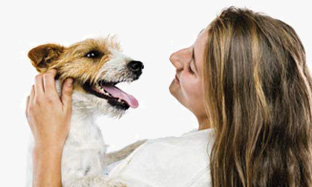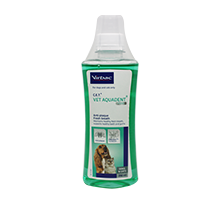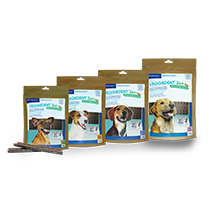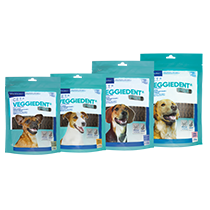
Why does your dog or cat have bad breath?
Dental disease is the most commonly observed disease in veterinary medicine today; in fact, according to the Global Veterinary Community, 70% of cats and 80% of dogs over the age of three years suffer from dental disease1 and two out of three dogs have bad breath (halitosis)2. If your dog or cat has bad breath, this could be the first sign of a problem – but it is a problem that can be prevented.
Just as with your own teeth, residual food, calcium deposits, and bacteria form plaque and tartar on pets’ teeth. This can have painful – and sometimes harmful – results.
If you fail to address this problem, it can result in bacteria being carried into your pet’s bloodstream, which could result in severe, or even fatal, complications. Your pets’ dental hygiene is therefore a very important part of their health and well-being.
Numerous symptoms can be an indication of dental disease in cats and dogs:
- Drooling.
- Bad breath.
- Poor appetite and/or reluctance or apparent inability to eat.
- Smacking of lips.
- Rubbing or pawing at the mouth.
- Mouth open with the tongue protruding.
- Favouring one side of the mouth when eating and dropping food while chewing.
- Preference for tinned or soft food and rejection of crunchy or hard foods.
- Teeth stained yellow or brown (plaque) or a greyish-white pus discharge around the gums or teeth
- Swelling, redness, or bleeding of the gums
Daily home care is the key in preventing dental disease and bad breath and there are a number of ways in which you can do this using a combination of the following measures:
- Oral rinse daily or after each meal to help keep the mouth and teeth clean.
- Dental additives in pets’ water.
- Frequently giving pets special dental chews and treats, and putting them on dental diets.
- Regular brushing of the teeth using pet-specific toothpastes and toothbrushes.
- Rinsing using special gels.
Don’t risk your pets’ health. Prevent dental diseases – give your pets a dental check-up at their next vet visit and look after their teeth daily.
- WSAVA Global Dental Guidelines, 2017 (https://www.wsava.org/Guidelines/Global-Dental-Guidelines)
- Market Research, Kynetec, 2016
Follow us on social media



.png)

